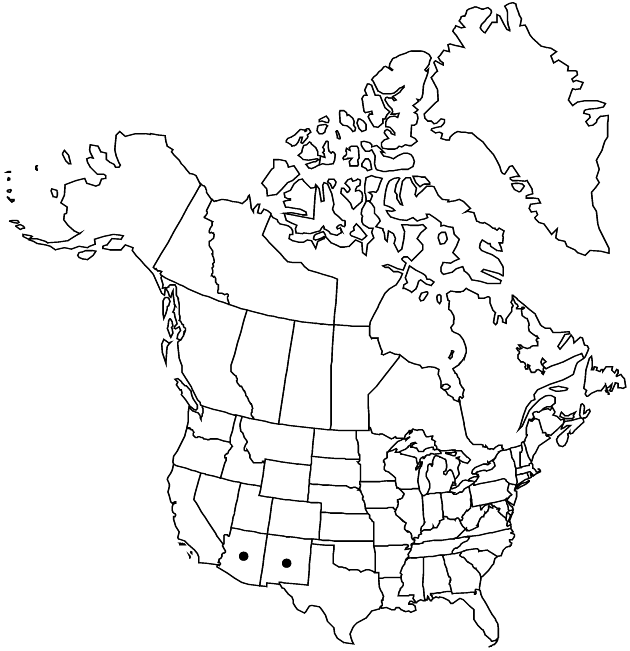Hymenoxys rusbyi
Bull. Torrey Bot. Club 31: 496. 1904.
Perennials, 30–150 cm (polycarpic, often with moderately branched, woody caudices). Stems 1–5 (–15), usually purple-red-tinted proximally, branched distally, glabrous or ± hairy. Leaves: blades simple or lobed (lobes 3), glabrous, glanddotted; mid leaves simple or lobed (lobes 3, terminal lobes 2–4 mm wide). Heads 50–250+ per plant, in corymbiform arrays. Peduncles 1–3.2 cm, glabrous or ± hairy. Involucres campanulate to urceolate, 6–8 × 6–7 mm. Phyllaries in 2 series, unequal; outer 7–9, basally connate 1/4–1/3 their lengths, lanceolate, 4.5–6 mm, apices usually rounded; inner 7–11, obovate, 3.5–4.5 mm, apices mucronate. Ray-florets 6–8; corollas yellow, 4.5–8 × 2.5–5 mm. Disc-florets 25–50+; corollas 2.7–3.2 mm. Cypselae narrowly obpyramidal, 2–3 mm; pappi usually of 5 obovate, sometimes aristate, scales 0.9–1.8 mm. 2n = 30.
Phenology: Flowering Jul–Aug(–Oct).
Habitat: Roadsides, open areas, edges of forests
Elevation: 1600–2100 m
Discussion
Selected References
None.
